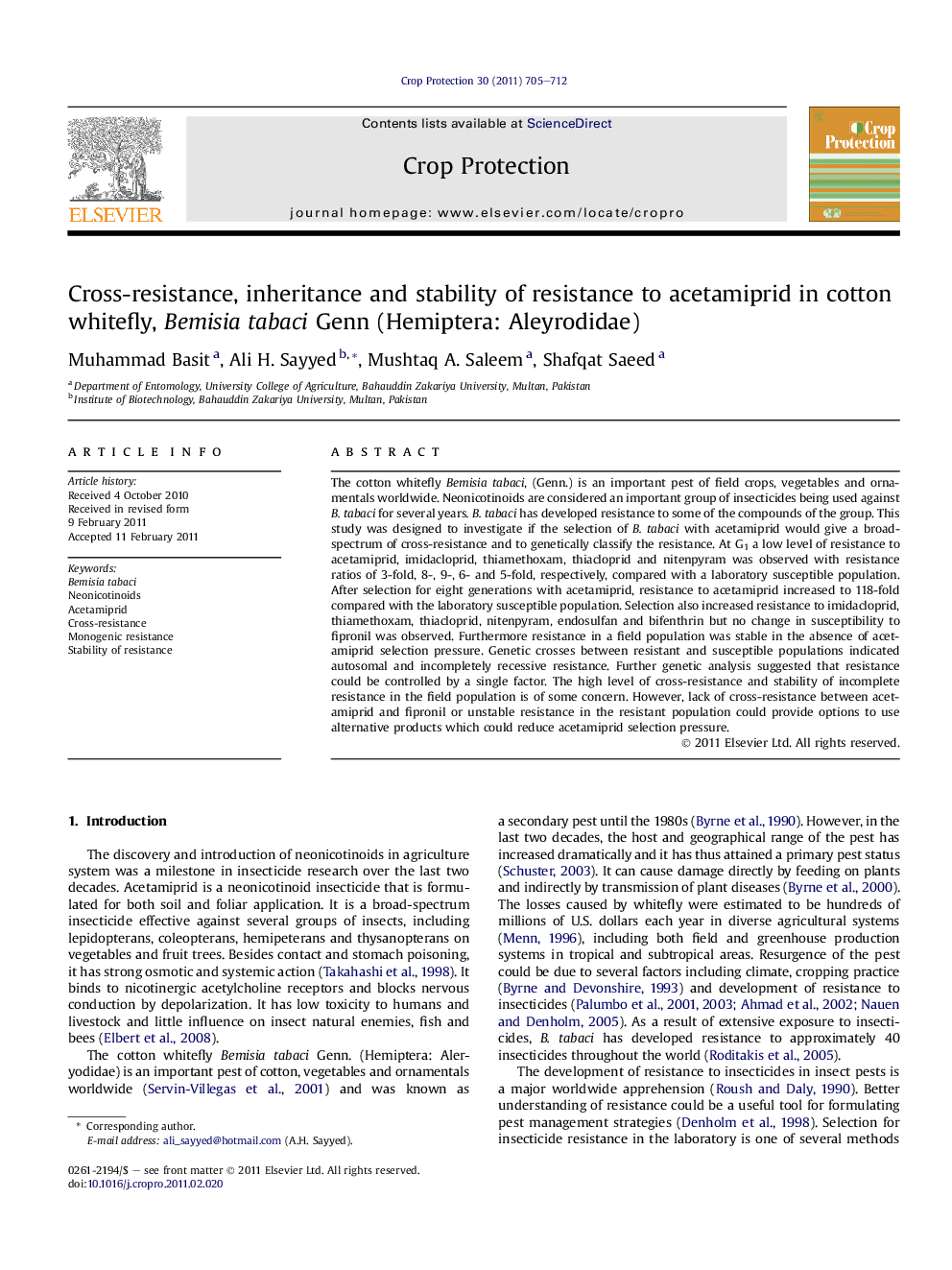| Article ID | Journal | Published Year | Pages | File Type |
|---|---|---|---|---|
| 4507065 | Crop Protection | 2011 | 8 Pages |
The cotton whitefly Bemisia tabaci, (Genn.) is an important pest of field crops, vegetables and ornamentals worldwide. Neonicotinoids are considered an important group of insecticides being used against B. tabaci for several years. B. tabaci has developed resistance to some of the compounds of the group. This study was designed to investigate if the selection of B. tabaci with acetamiprid would give a broad-spectrum of cross-resistance and to genetically classify the resistance. At G1 a low level of resistance to acetamiprid, imidacloprid, thiamethoxam, thiacloprid and nitenpyram was observed with resistance ratios of 3-fold, 8-, 9-, 6- and 5-fold, respectively, compared with a laboratory susceptible population. After selection for eight generations with acetamiprid, resistance to acetamiprid increased to 118-fold compared with the laboratory susceptible population. Selection also increased resistance to imidacloprid, thiamethoxam, thiacloprid, nitenpyram, endosulfan and bifenthrin but no change in susceptibility to fipronil was observed. Furthermore resistance in a field population was stable in the absence of acetamiprid selection pressure. Genetic crosses between resistant and susceptible populations indicated autosomal and incompletely recessive resistance. Further genetic analysis suggested that resistance could be controlled by a single factor. The high level of cross-resistance and stability of incomplete resistance in the field population is of some concern. However, lack of cross-resistance between acetamiprid and fipronil or unstable resistance in the resistant population could provide options to use alternative products which could reduce acetamiprid selection pressure.
► Selection increased resistance to acetamiprid and cross resistance to several neonicotinoids. ► Resistance to acetamiprid was stable in the absence of selection pressure. ► Resistance to acetamiprid was autosomal and incompletely recessive resistance. ► Further analysis suggested that resistance could be controlled by a single factor. ► Lack of cross-resistance between acetamiprid and fipronil provide an alternative option.
